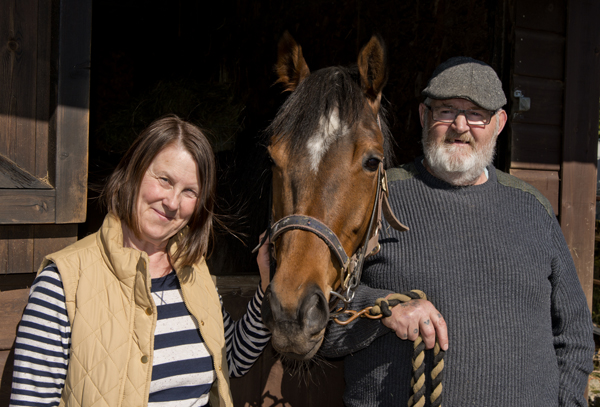This is a bona fide rags to riches story, but not centered on the kind of rewards that can be tallied in substantial monetary gain. For a group of unlikely horse owners in the struggling former mining town of Cefn Fforest in Wales, wealth comes in the form of lasting friendships, community pride, and a goal realized. Director Louise Osmond allows the owners to relate their real-life fairy tale of how a gangly, unremarkable foal grew up to become a racehorse champion.
Barmaid and store cleaner Jan Vokes recalls how her father bred parakeets and her fascination as a young girl at all the different variations in plumage that resulted from his genetic pairings. She grew up to raise purebred whippets for show. So, when she hears customer Howard Davis discuss his (failed) experiences as a racehorse owner, she wonders, “How hard could it be?” Vokes manages to convince 23 friends and neighbors, including Howard, who had sworn never to get involved in horse ownership again, to contribute £10 a week toward breeding and training a horse that they hope would compete in local races.
In this sport of the elite, millions of dollars can change hands in the hope of producing a prize-winning racehorse. Vokes buys a thoroughbred mare for £300 and pays stud fees of £3000 for a stallion that has a few minor races to his name. The result is a wobbly legged foal with a winning personality, but little else to recommend him. The group has saved enough to invest in years of training for him, so they proceed with their plan to see if he shows any promise. They name him Dream Alliance.
The young horse gets off to a rough start, and the stable owner has little hope for him, but Dream surprises everyone by placing fourth in his first race. He continues to place consistently in subsequent races and appears to be headed to the Grand National when he suffers an injury that could, at best, end his career, and, at worst, end his life. What happens next is what makes this a story worth sharing, and the owners prove to be every bit as remarkable as their horse.
Osmond uses a montage of paintings, old photos, video footage, and newspaper headlines to provide context for her talking-head interviews. Cinematographer Benjamin Kracun paints the depressed, working-class town with dark hovering skies, drifting mists, pouring rain, and shin-deep mud, with some scenes completely obscured by the rain soaked lens of his camera. By contrast, footage of Dream Alliance is often bathed in light, the horse seeming to radiate a glow of his own. Anne Nikitin’s musical score adds an additional sentimental touch.
But, unlike the Hollywood polish and melodrama of popular horse racing movies like Sea Biscuit (2003) and Secretariat (2010), the charm of Dark Horse is in its warts, tattoos, and missing teeth. Real people, unpretentious, relating their stories with humor and passion. Winner of the Audience Award: World Cinema at the 2015 Sundance Film Festival, Dark Horse is an everyman story for the whole family that proves some dreams really do come true.







Leave A Comment